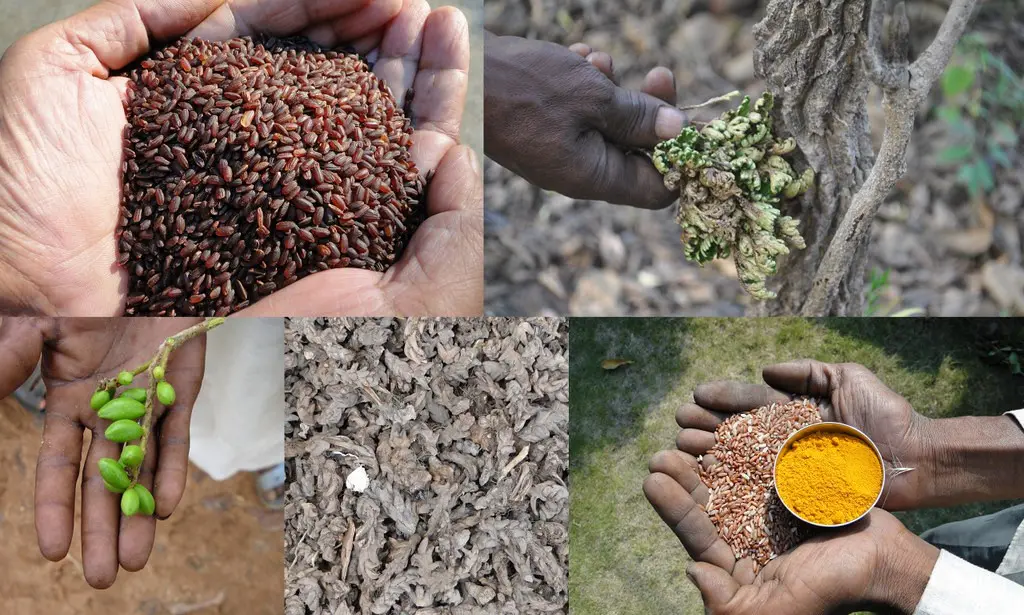
Seven Amazing Health Benefits of Eating Rice:
Rice has numerous health benefits; it is an instant source of energy and is good not only for skin but also in maintaining blood sugar levels. Here are the various health benefits of rice:-
- Great Source of Energy: Rice is made up of long chains of complex carbohydrates that take time to break down, thus beneficial for diabetics compared with other foods rich in starch.
- High Nutritional Value: White rice is high in minerals such as calcium and iron; it is also rich in vitamins, such as niacin, vitamin D, thiamine and riboflavin. A rice diet has low carbohydrate and fat content and therefore is great for people who want to lose weight.
- Controls Disease’s Occurrence: Brown rice contains high amount of neurotransmitters that prevent the occurrence of Alzheimer’s disease. Rice also contains antioxidant properties that protect the heart by minimising the occurrence of heart diseases and stroke. Rice husk has diuretic properties and is an efficient cure for dysentery.
- Cancer Protection: Brown rice is rich in fibre which acts as a shield against cancerous cells, thereby protecting the body against cancer.
- Controls Blood Pressure: Rice contains very low amount of sodium, hence, it helps in controlling high blood pressure. Rice contains very low amount of saturated fats and cholesterol making it a healthful food for heart.
- Prevents Constipation: Rice is an excellent source of healthy fibre. These help in the growth of beneficial bacteria that improve digestion and regularise the bowel movement. Brown rice is a good source of fibre and therefore, improves digestion. Khichdi a dish of pulse and rice is most recommended dish for upset stomach.
- Gluten-free Food: Rice does not contain gluten and therefore, it can be easily included in the diet of people suffering from celiac disease and those who are allergic to proteins such as those found in wheat, barley, rye and oats.
- Health Benefits of Traditional Rice Varieties
During recent times the traditional rice varieties are experiencing an increasing demand due to their incredible health benefits. Rice in addition to being staple food is also known for its medicinal values.
- In Ayurveda, the medicinal values of rice have been described as acrid, oleaginous, tonic, aphrodisiac, fattening, diuretic and useful in biliousness. Ayurveda prescribe different rices for various ailments.
- The traditional rice possess low sugar content, high glutamic acid, fiber and vitamins making them fair choice for health conscious consumers.
- It has been validated by researchers that native rice have high content of bioactive components including antioxidants like tocopherols, tocotrienols, oryzenols, polyphenols, flavonoids, vitamin-C, play an important role in defending the body from attack of chronic diseases.
- The pigmented anthocyanins rich red and black rice varieties offer several health benefit like anti-oxidative, anti-inflammatory and anticarcinogenic properties which make them considered as preferred food.
- The pigmented traditional rice also possess higher amount of zinc and iron compare to white rice which help to boost, strengthen, regenerate and energize the body.
- The coloured aromatic rice varieties besides having pleasant taste and odour also possesses pigmented compounds such as Cyanidin-3-O-β-D-glucopyranoside in abundant which is associated with diverse functional properties such as, protection against cytotoxicity, antineurodegenerative activity, inhibition of glycogen phosphorylase and possessing antioxidant and scavenging activity higher than white rice varieties.
- Some people also credit traditional varieties with other health benefits, such as giving sensations of cooling in the body, improves vocal clarity, eyesight, fertility and mitigating rashes.
- In ancient Ayurvedic treatises red rice as a nutritive food and medicine for the treatment of various ailments such as diarrhoea, vomiting, fever, haemorrhage, chest pain, wounds, and burns.
- Clinical trials with red rice has shown antifungal, anti-bacterial, anti-viral, ant-diarrheal, anti-inflammatory, antioxidant, antitumor, anti-thyroid and anti-hyper cholesterolemic activities. It also stimulates protein secretion besides having radical scavenging effects.
- The need of the day is to commercialize these varieties and promote them through public awareness about their important characteristics.
Some selected native rice varieties used in specific treatments
Aalcha, Nagkesar, Kari bhatta – Skin problems, pimples
Kanthi Banko – Medicinal properties
Chinta puvvu, Paccha ganneru – Nutritional & medicinal value
Gathuran – Arthritis, Rheumatism
Karanga – Dysentery
Bora – cure jaundice.
Gudna -for chronic gastritis
Baisoor – epilepsy; headache, boils, skin diseases, ringworm , conjunctivitis
Layacha, Jonga-Sirhatti – pre pregnancy and lactating mother
Maharaji – strength and stamina to ladies post delivery
Karhani – breathing problems, epilepsy and in urinary irritation. It is also used as Kajal (soot) for cataract.
Atikaya, Saraiphool, Karia Gora, Punai Gora, Dani Gora, Pakheru – health tonic for week person
Danwar – for cows safe pregnancy, healthy calf and easily removal of placenta.
Some other popular medicinal rice of India are: Jhilli, Udan Pakheru, Sugandhalaka, Shyam Lal, Tenduphool, Pundarika, Panduka, Kardamaka, Maetunaka, Mahasali, Ramakeli, Kalama, etc.

